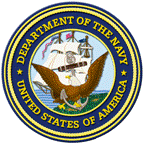United States Department of Defense

United States Navy: Publications
Date of this Version
2014
Citation
Journal of Military Ethics, 2013 Vol. 12, No. 4, 373–375.
doi 10.1080/15027570.2013.871469
Abstract
In 1999, I was the commanding officer of the VF-14 ‘Tophatters’, an F-14 squadron assigned to Carrier Air Wing Eight embarked in USS Theodore Roosevelt (CVN 71). We were flying F- 14A Tomcats, the oldest Tomcats in the fleet, modified for the air-to-ground mission with the Low Altitude Navigation and Targeting Infra-Red for Night (LANTIRN) system. Departing in late March 1999 for a planned six-month deployment, we made a quick transit across the Atlantic Ocean with orders to be prepared for action in the Balkans. On 6 April, our squadron conducted combat operations in support of Operation Allied Force (North Atlantic Treaty Organization (NATO) and Operation Noble Anvil (USA) in Kosovo. ...
Having served 32 years in our navy, I am often asked to talk about combat operations. When I reflect on my life lessons, I often discuss the details of this one particular ‘bridge’ mission in Kosovo. I do not talk too much about targets that I or my fellow aviators successfully destroyed, but I do often reflect on this mission as one of my personal life-changing moments and how its positive impact influenced an entire squadron. I continue to think about its significance to this day.


Comments
U.S. government work.